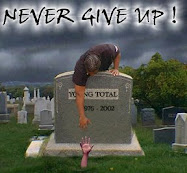#OccupyWallStreet: Hand Gestures, Health Care and the Birth of a New Paradigm
by Tim King 10-07-2011 05:40 pm
NEW YORK, N.Y. – Brendan, with his shaved head, tattoos and tight black t-shirt, looks like he should be a bouncer at a night club.
Instead, he is standing at the entrance of the outdoor media center here in “Liberty Park.”
“And demand some jobs!!” the crowd chants in response as a large group of demonstrators migrates toward the cameras.
Sitting on the ground by a granite bench, a smaller group of protesters doesn’t even look up and continues its discussion. They are busy debating the best way to coordinate the flow of information through all of the various working groups, back to the General Assembly (the democratic decision making body) and then out to other “Occupy” groups across the world.
A drum circle formed at one end of the park and a blue grass trio plays to a small crowd at the other end. Every once in a while you’ll hear someone on an acoustic guitar singing a 60’s protest song. A small team hurriedly works “the kitchen” where all the food supplies are gathered. They rush to put out all of the donations they are receiving and answer questions about what food is vegan.
It can be hard to walk around in the afternoon when the crowd grows and tourists stop to take pictures and video. Throughout the day here at the #OccupyWallStreet mass demonstrations in New York’s financial district, you can find small and often somber groups meeting.
They have agendas, a facilitator, a time keeper, and someone to keep track of the “stack” — the list of people waiting to make a point or ask a question.
And they also have a system of hand gestures — a sort of gonzo sign-language adaptation of Roberts Rules of Order — designed to keep the discussion and decision-making process both democratic and efficient.
When someone agrees with a point the speaker is making, the crowd raises two hands in agreement. When the crowd disagrees, hands quickly go up, making a downward pointing motion. To call a “point of process” crowd members shape their hands into a triangle to stop discussion. Speakers who wander off topic are quickly redirected and reminded of the point being discussed in the agenda.
These working groups bring their recommendations to the #OccupyWallStreet General Assembly, which takes place once a day. A vote is taken to determine consensus before a recommendation is passed along to the G.A.
Anyone participating in the General Assembly can block a proposal by forming an X with their arms. Participants make their case and then a revised proposal is put forth. The revised proposal can then be passed with a 90/10 consensus.
Bre, a college student studying economics who has taken the semester off to participate in the protests, said that what is seen in the park is only a small example of what is occurring more broadly throughout the #OccupyWallStreet movement. When she talks about what is happening in that park and now across the world, you can tell she has started to develop here own succinct means of description but still doesn’t have practiced talking points.
“The intellectual capacity of this movement is enormous,” Bre said. “We are having city planners come down, economists and web experts all helping to build the infrastructure for a larger movement.”
Another participant said that “protest” is the wrong word for what is happening in “Liberty Park.”
“It’s really more of a ‘think tank,’” he said.
Drew, was hard to get a hold of. Our conversations were squeezed in between his busy schedule of meetings. He is in his mid-20’s and had been working freelance web design when he decided to devote himself full time to planning and executing the “Occupation.” Early planning meetings drew a good crowd of people but they never expected the demonstrations in Lower Manhattan to last more than a few days.
He uses the term “suicidal” to talk about the systems — political and economic — currently at work in the United States. “It simply doesn’t work to have an economy based on infinite growth when you life in a finite world,” Drew says. Changing the “suicidal” status quo, he says, requires a radically different way of living in and viewing the world.
The Wall Street protests in New York, while something of an ideological Eden where these new ways of living and thinking are being formed, are not without their own set of societal ills. There are a few trouble makers who don’t embrace the peaceable ethos of the majority, and a few reports of theft. (Some equipment has gone missing, for example.)
“Now, we are having to figure out the basic processes of how decisions are made,” Drew says. “We’re trying to figure out our own democracy.”
But, he says, demonstrators are trying to create systems of ersatz governance that are both realistic and a challenge to the current “paradigm” of broader U.S. culture and society.
Despite a few hiccups, by and large Drew believes the growing community of protesters — designing and building their own culture, really — is functioning well.
“This park is a microcosm of what we want to create,” Drew says, between bites of pizza — known as “occu-pies” at the demonstrations.) “Everybody has health care, enough to eat and the people own the media.”

























No comments:
Post a Comment